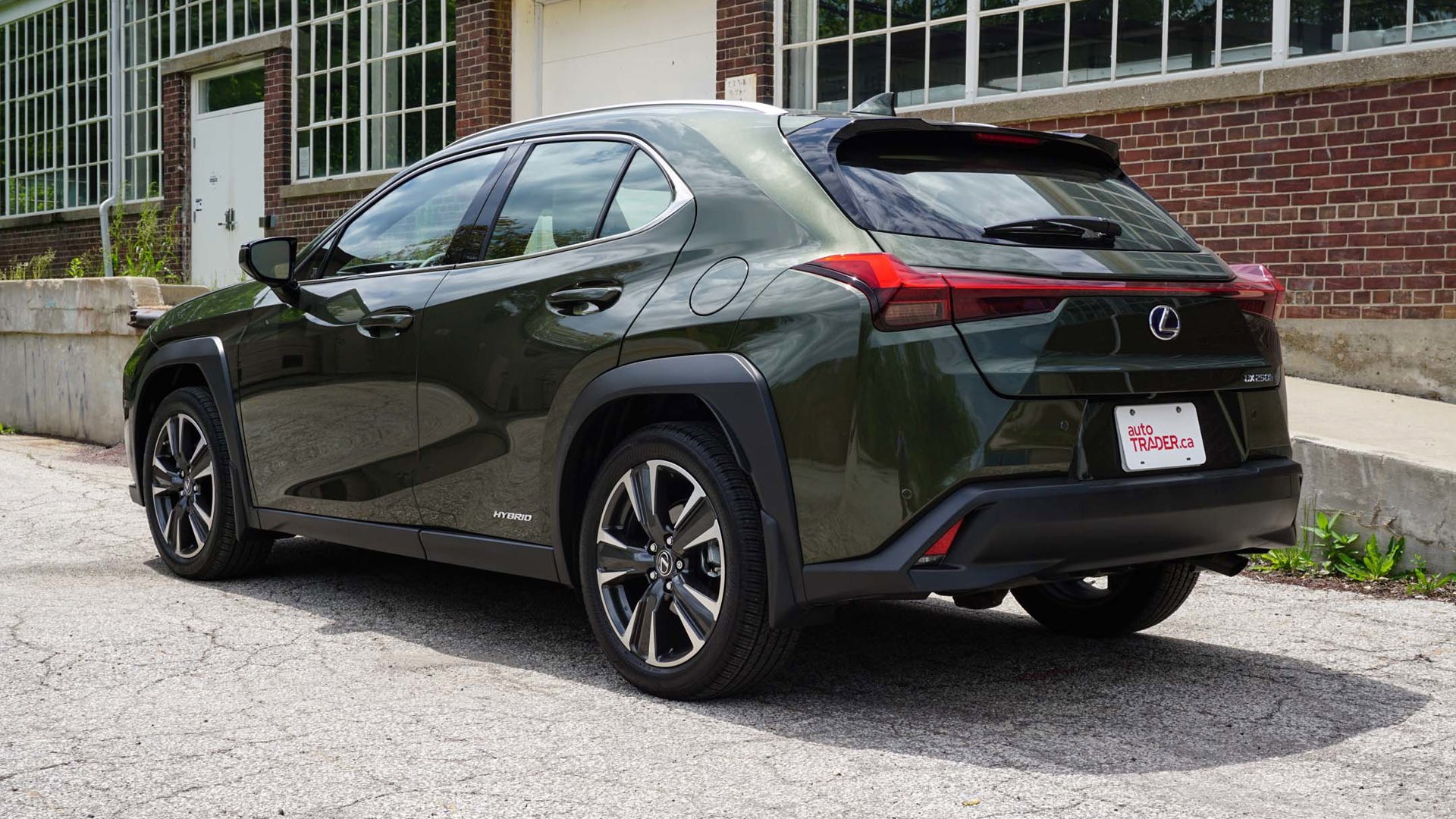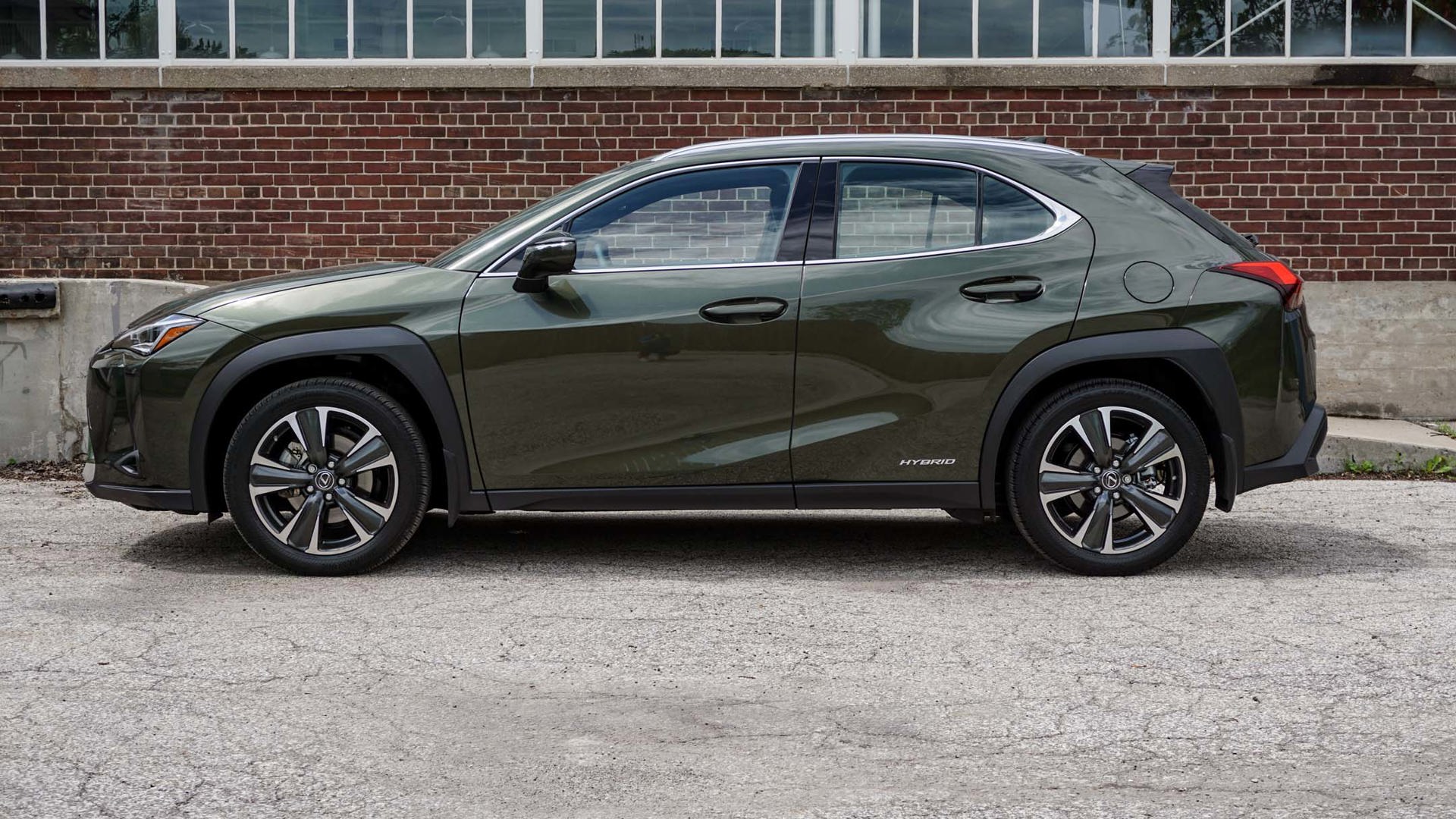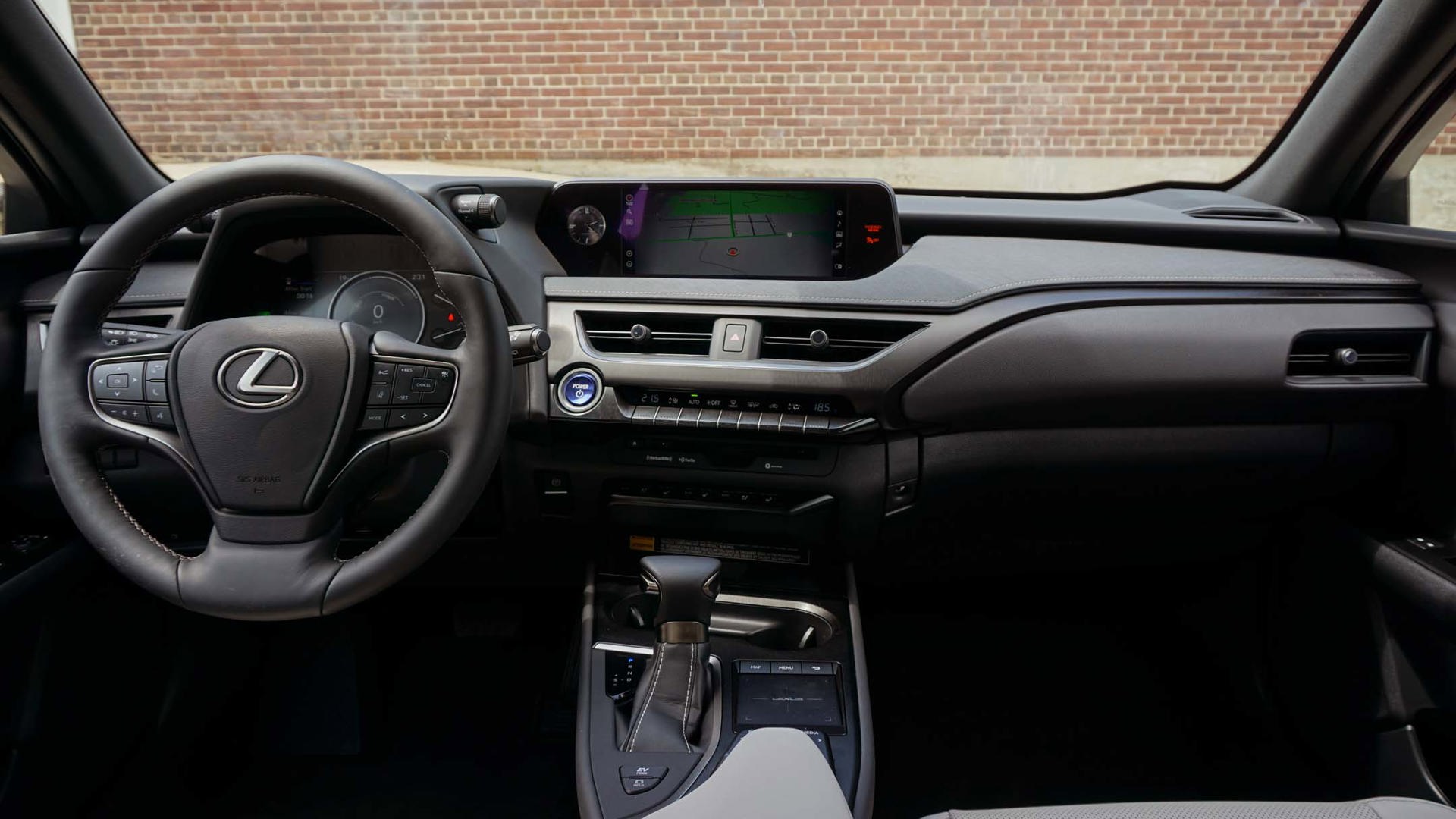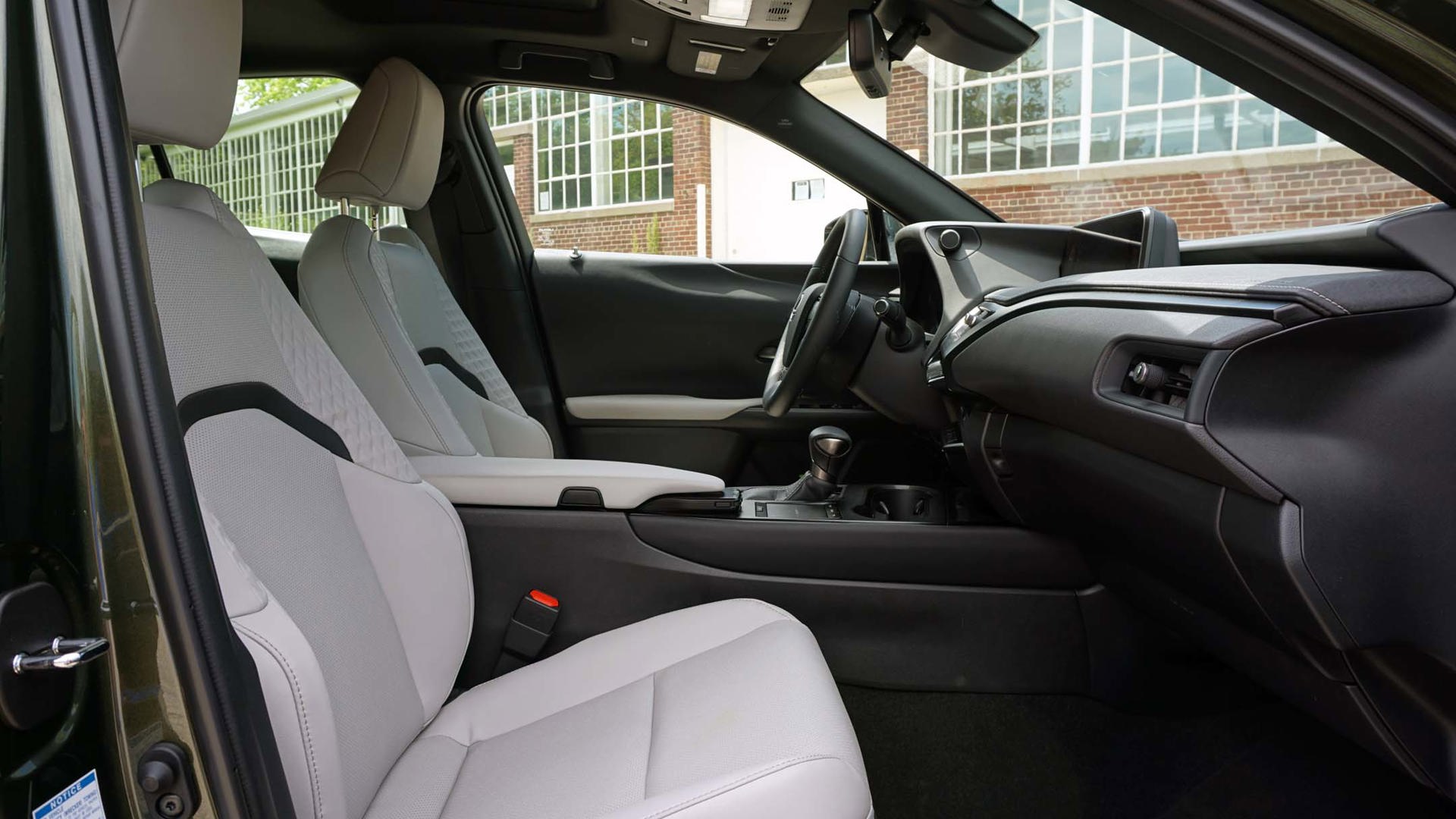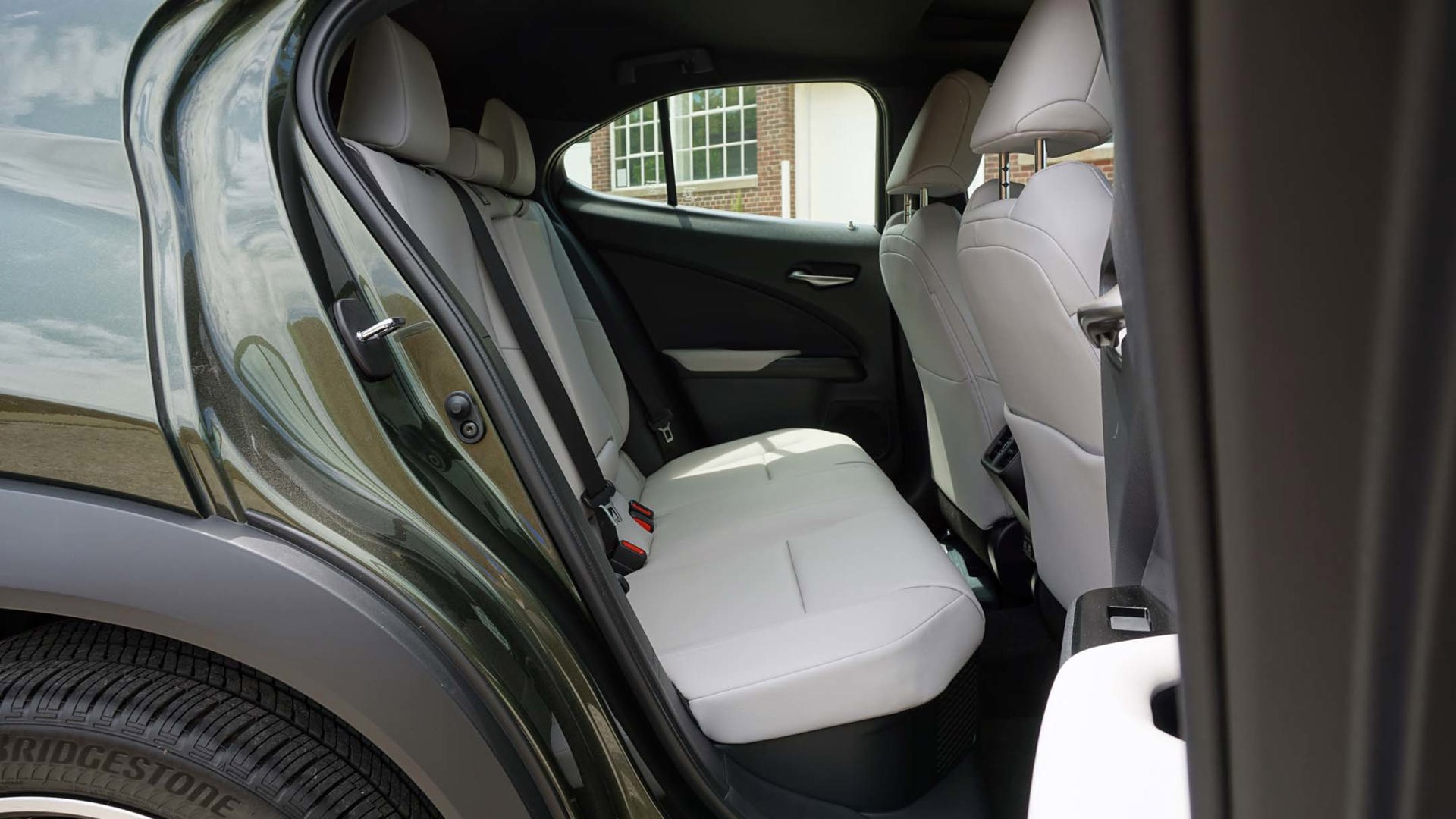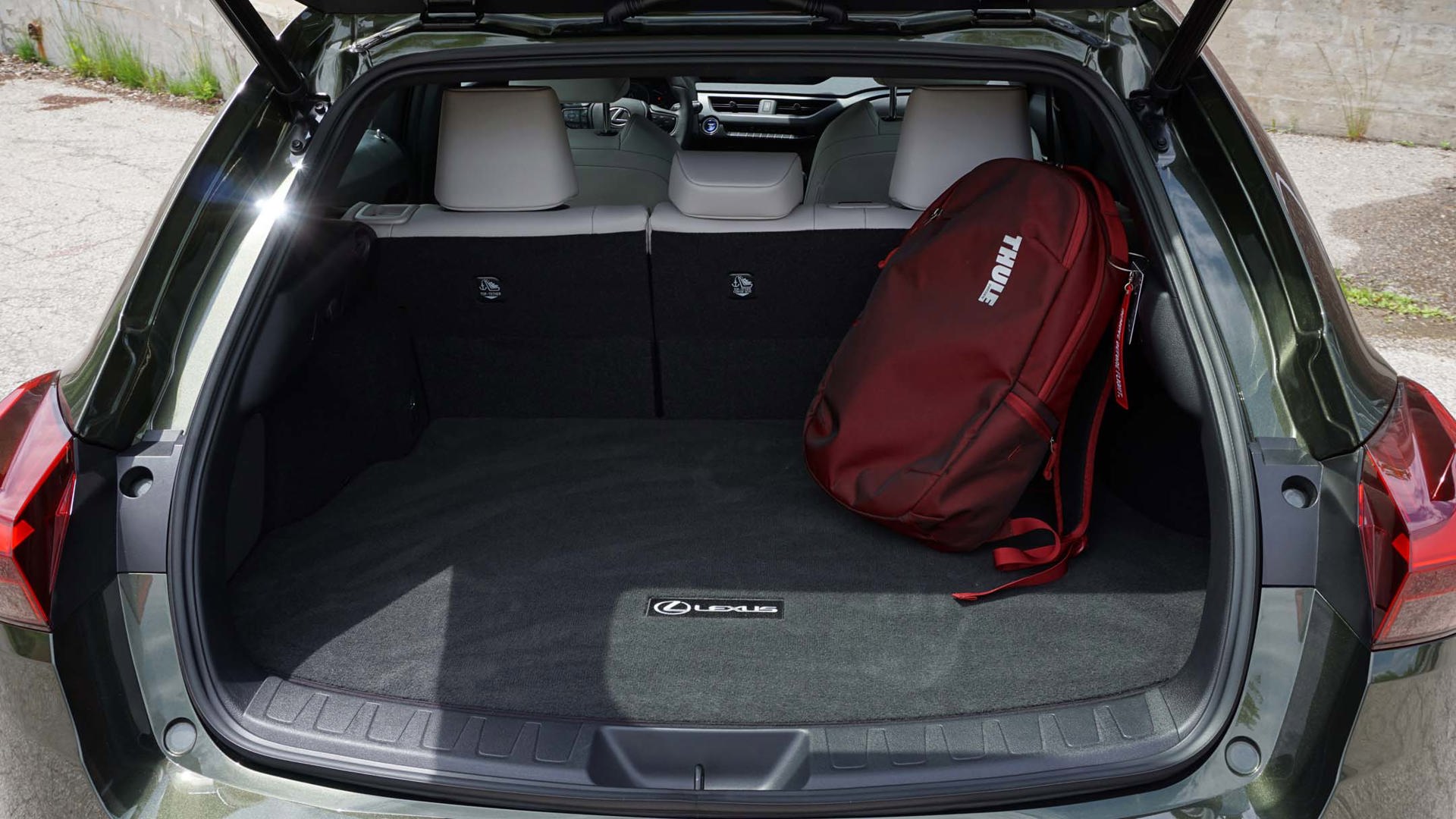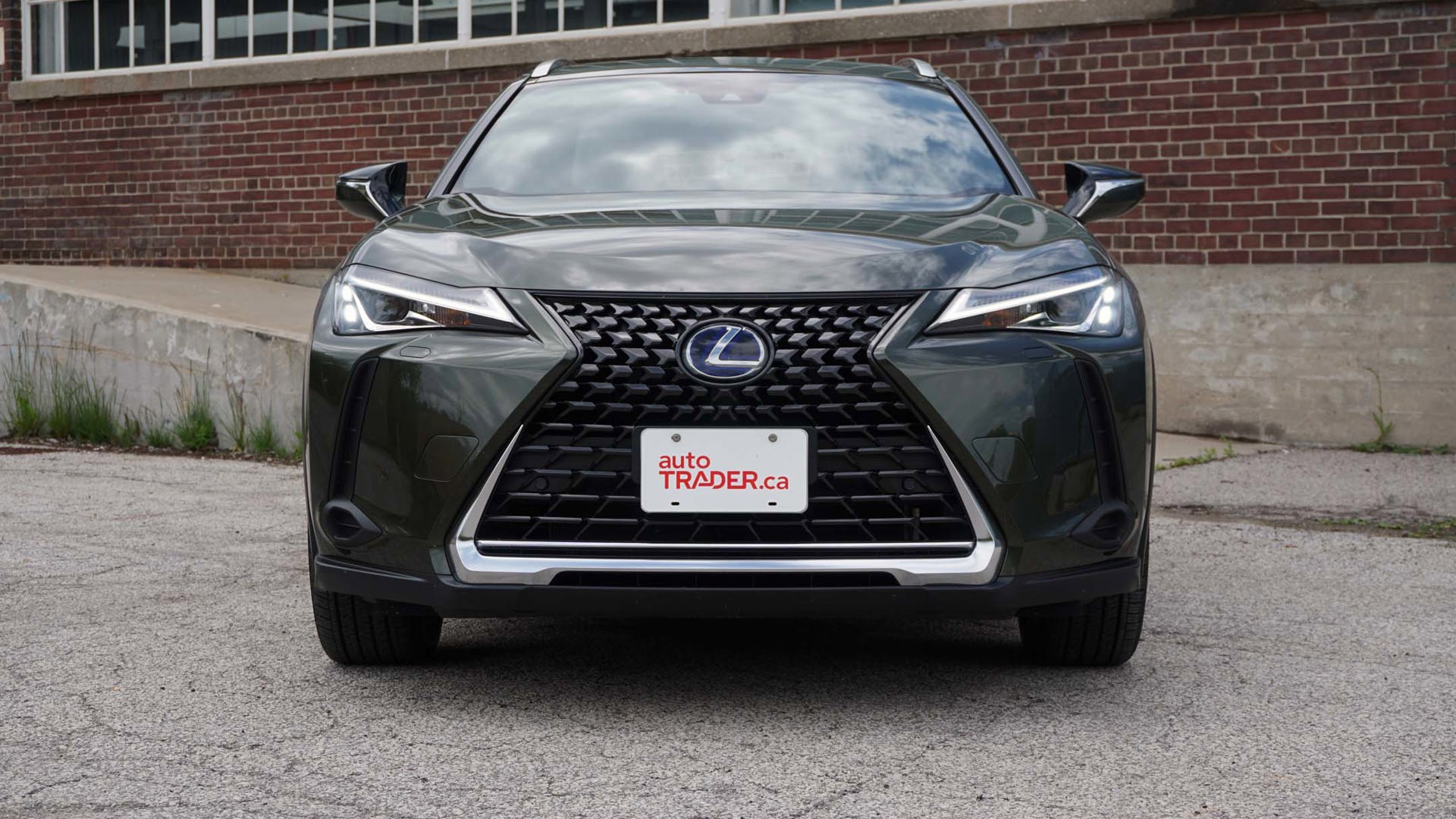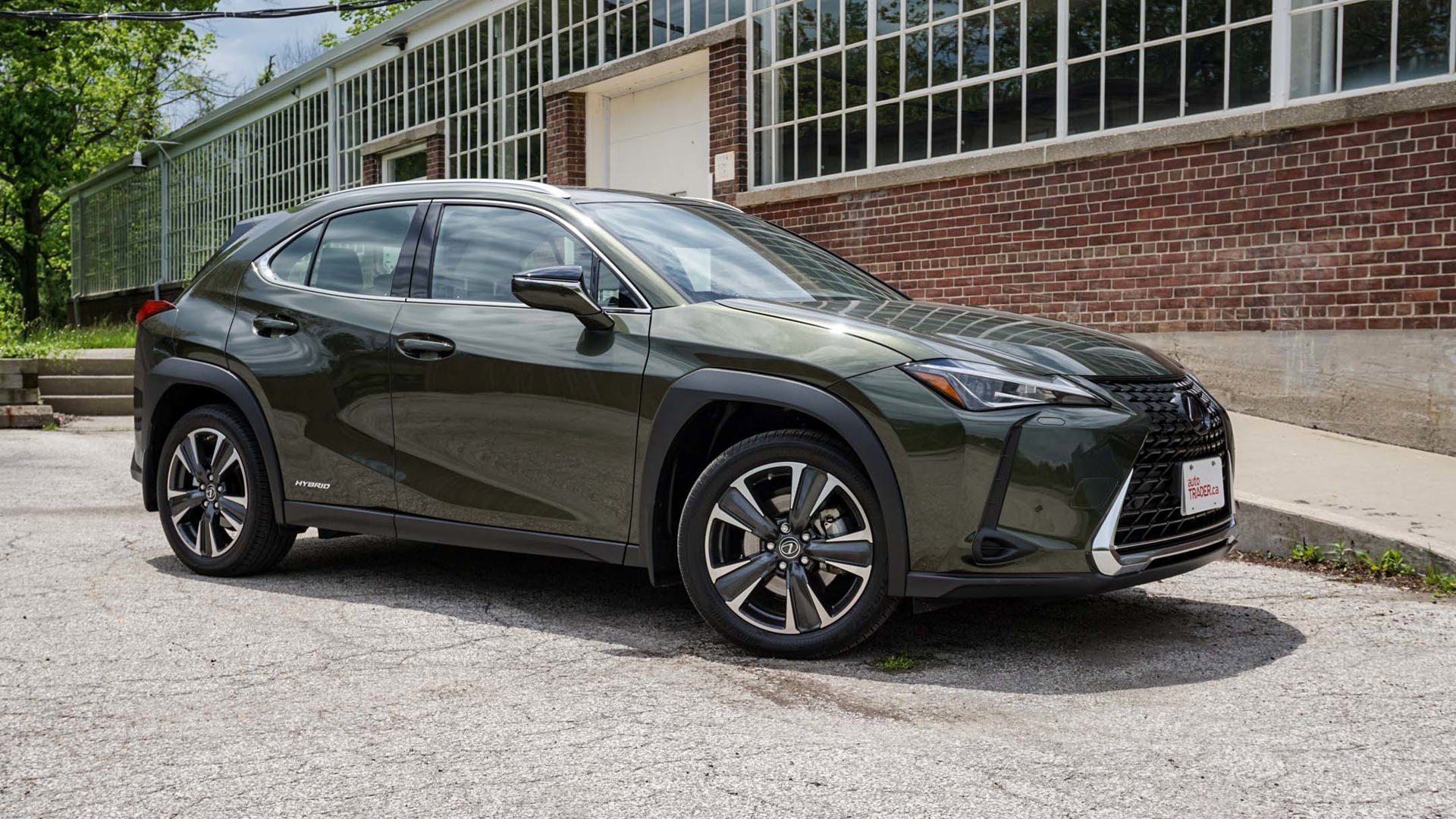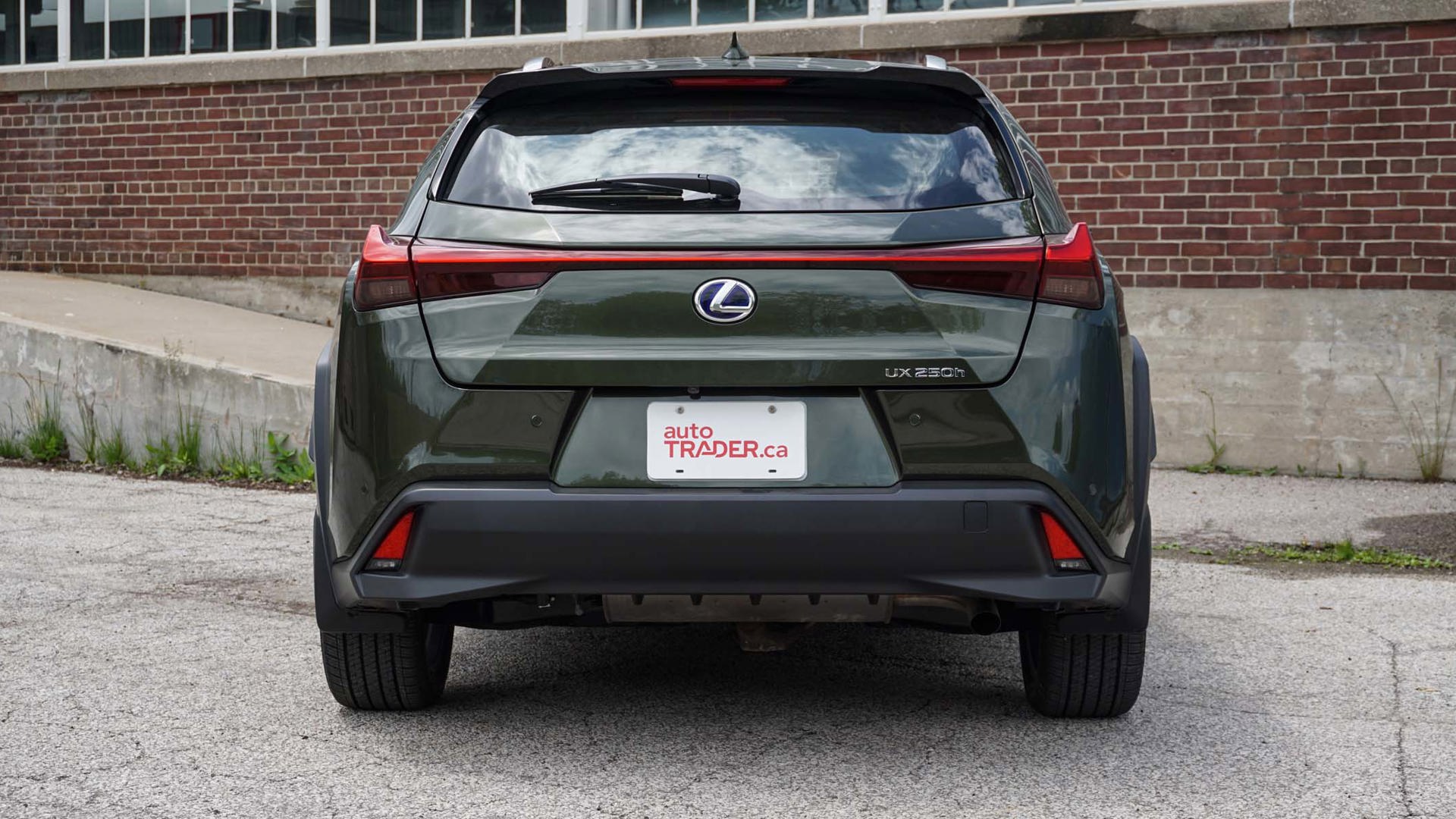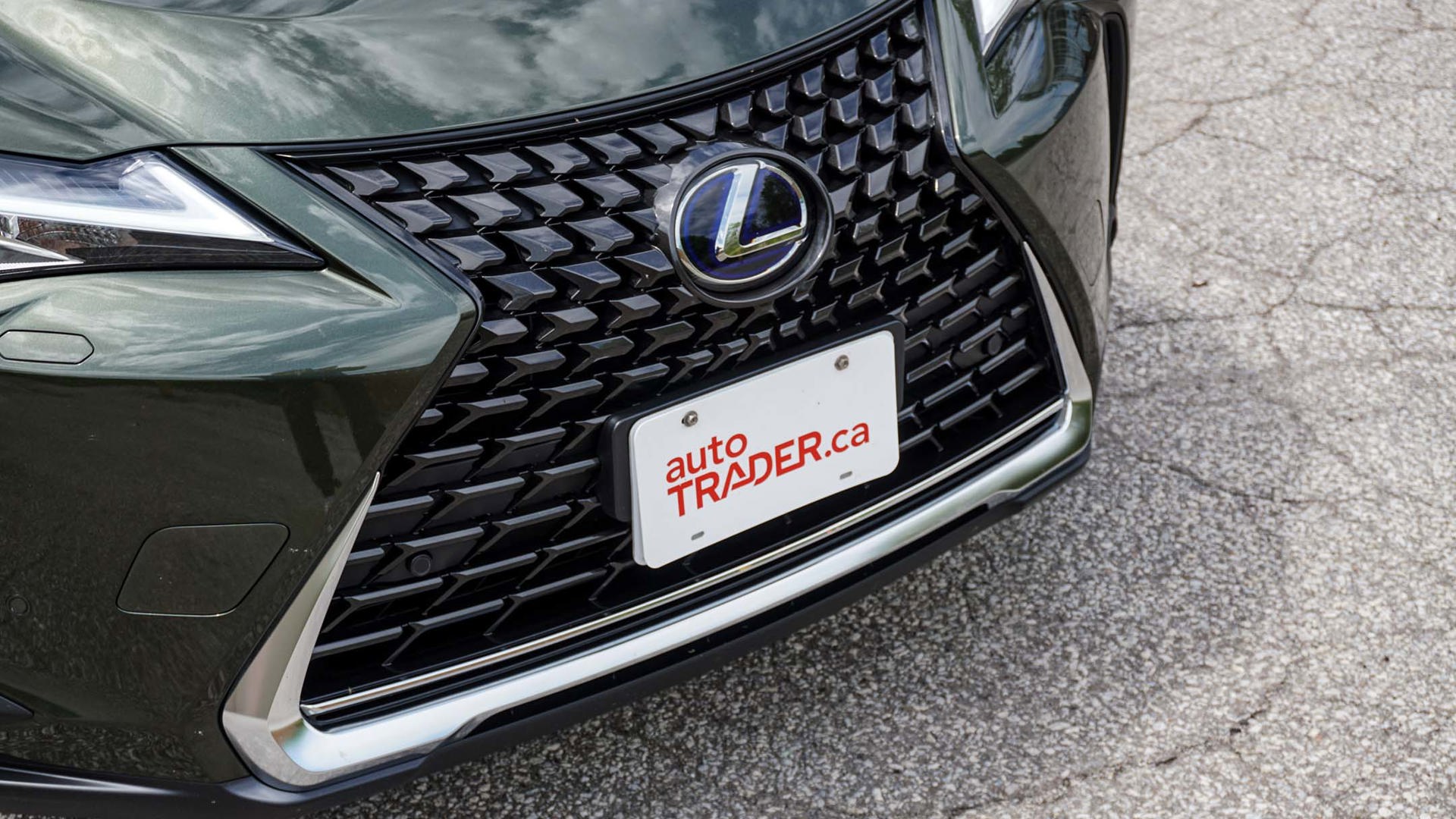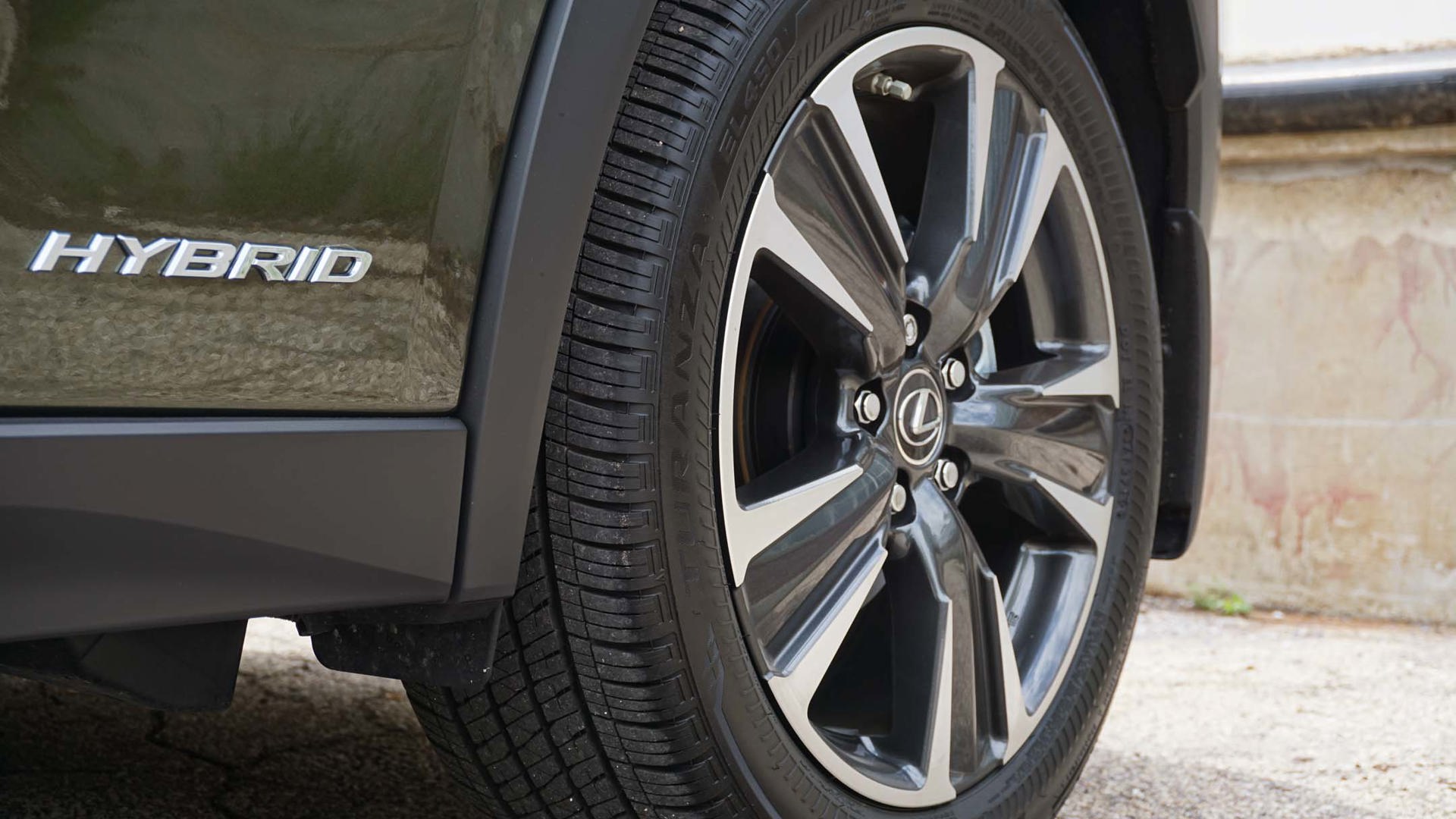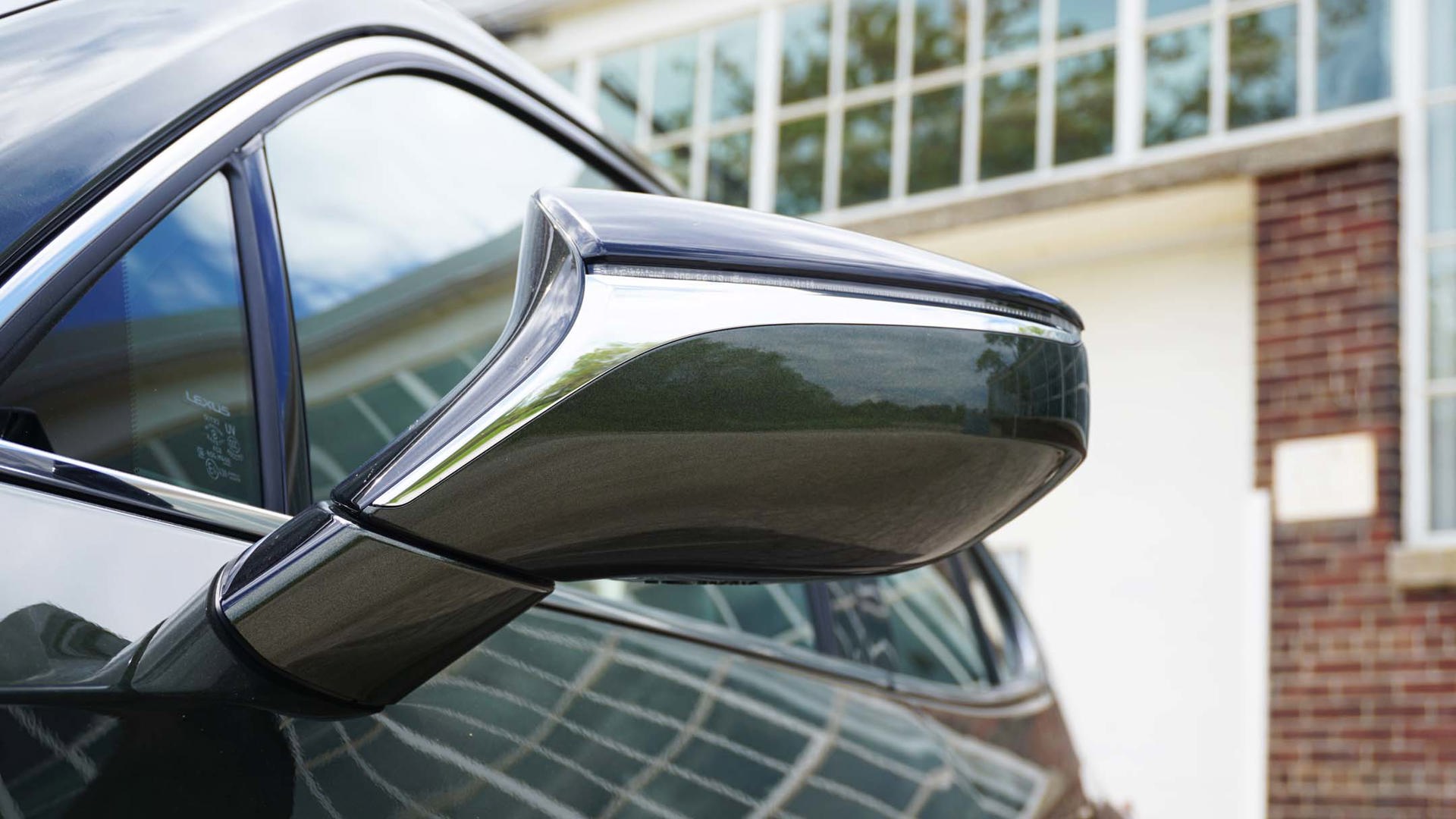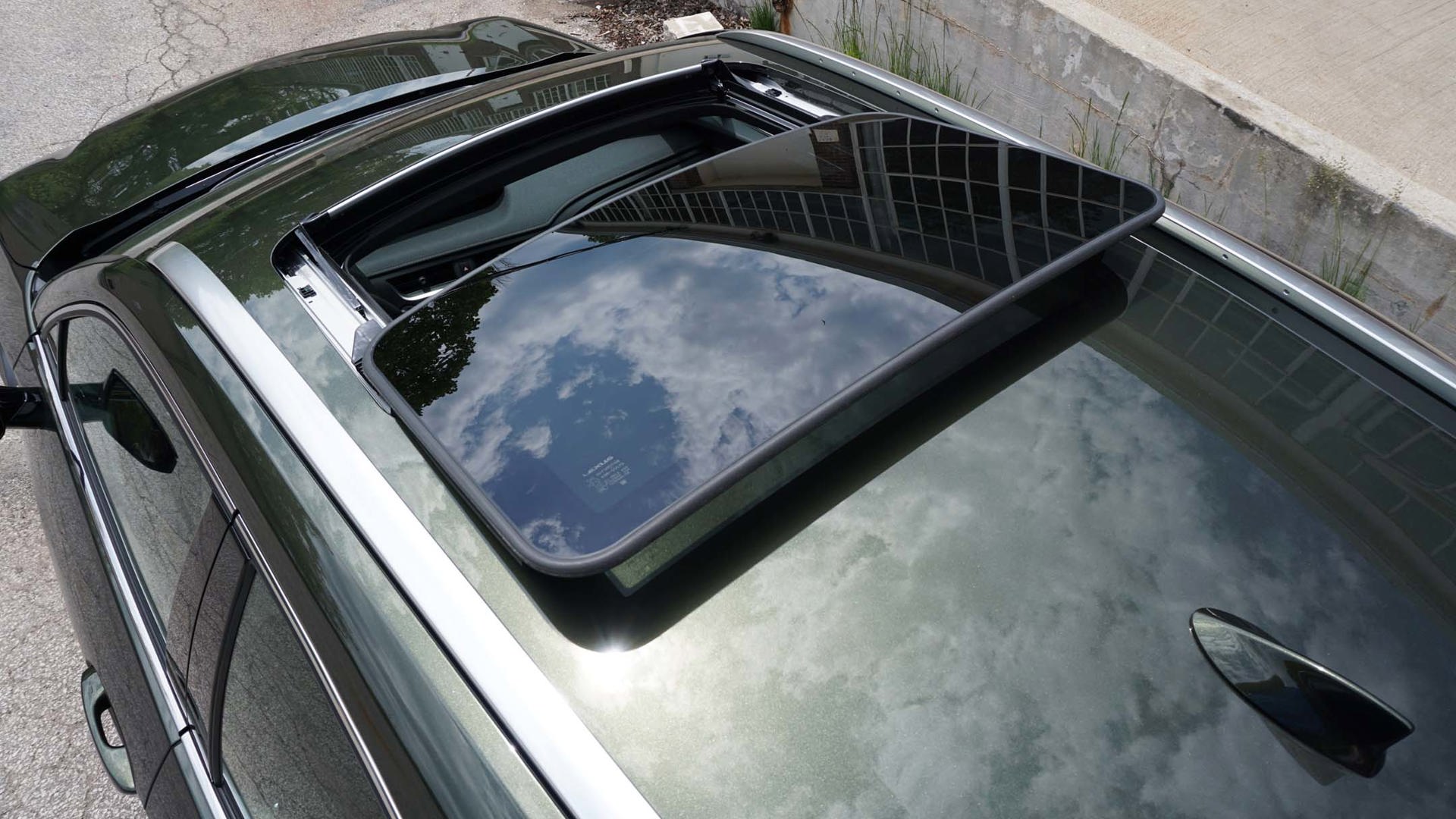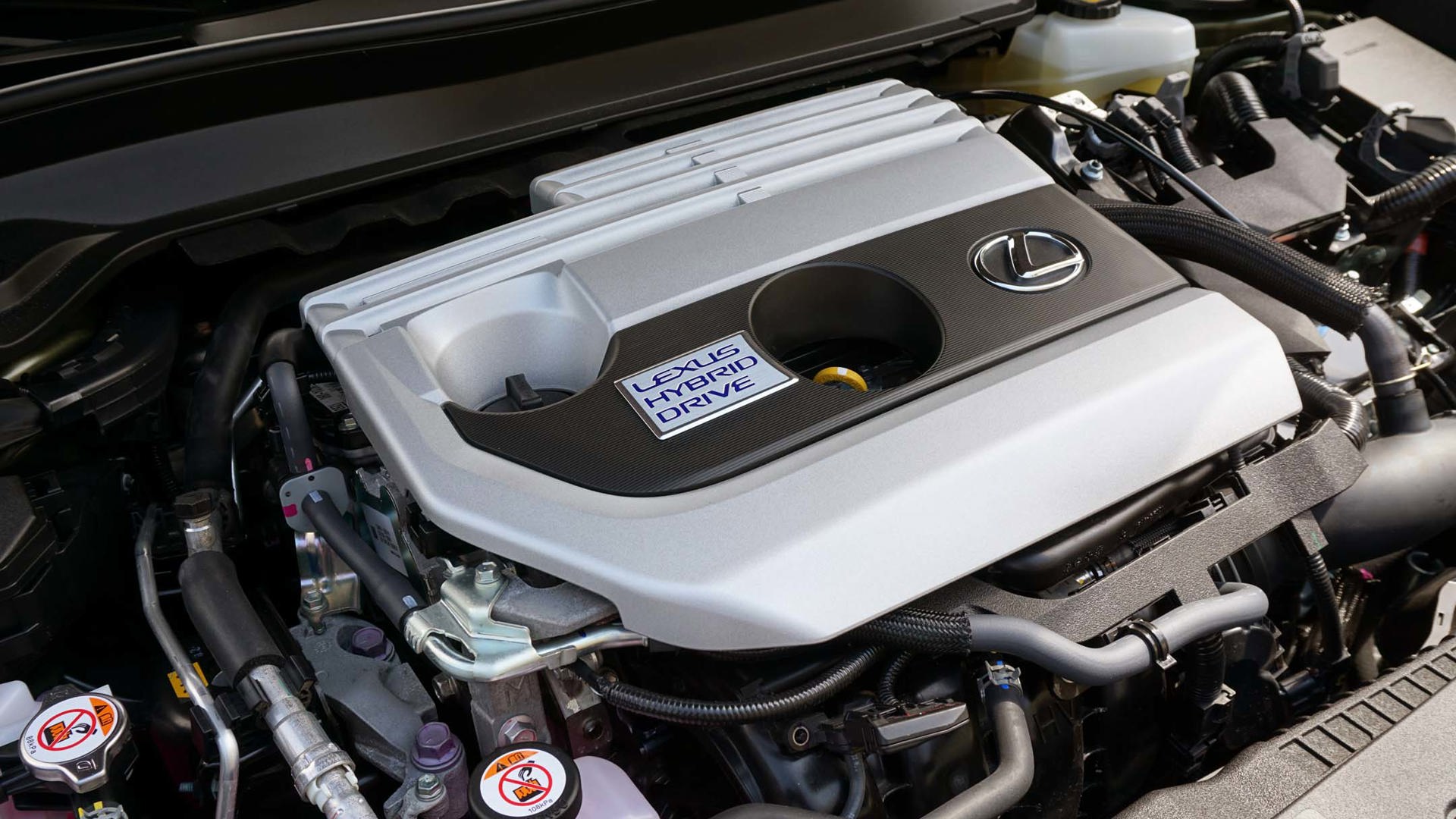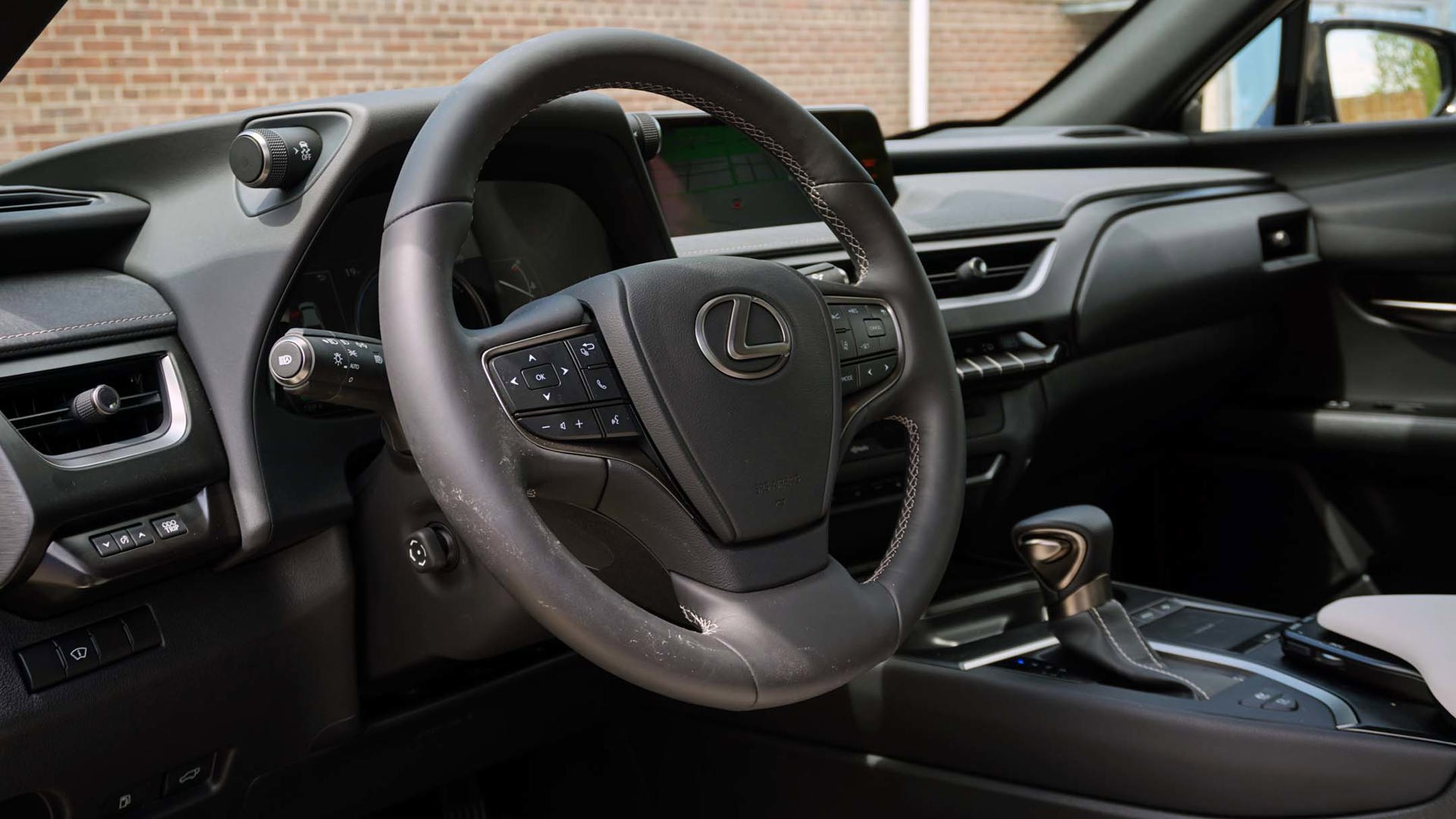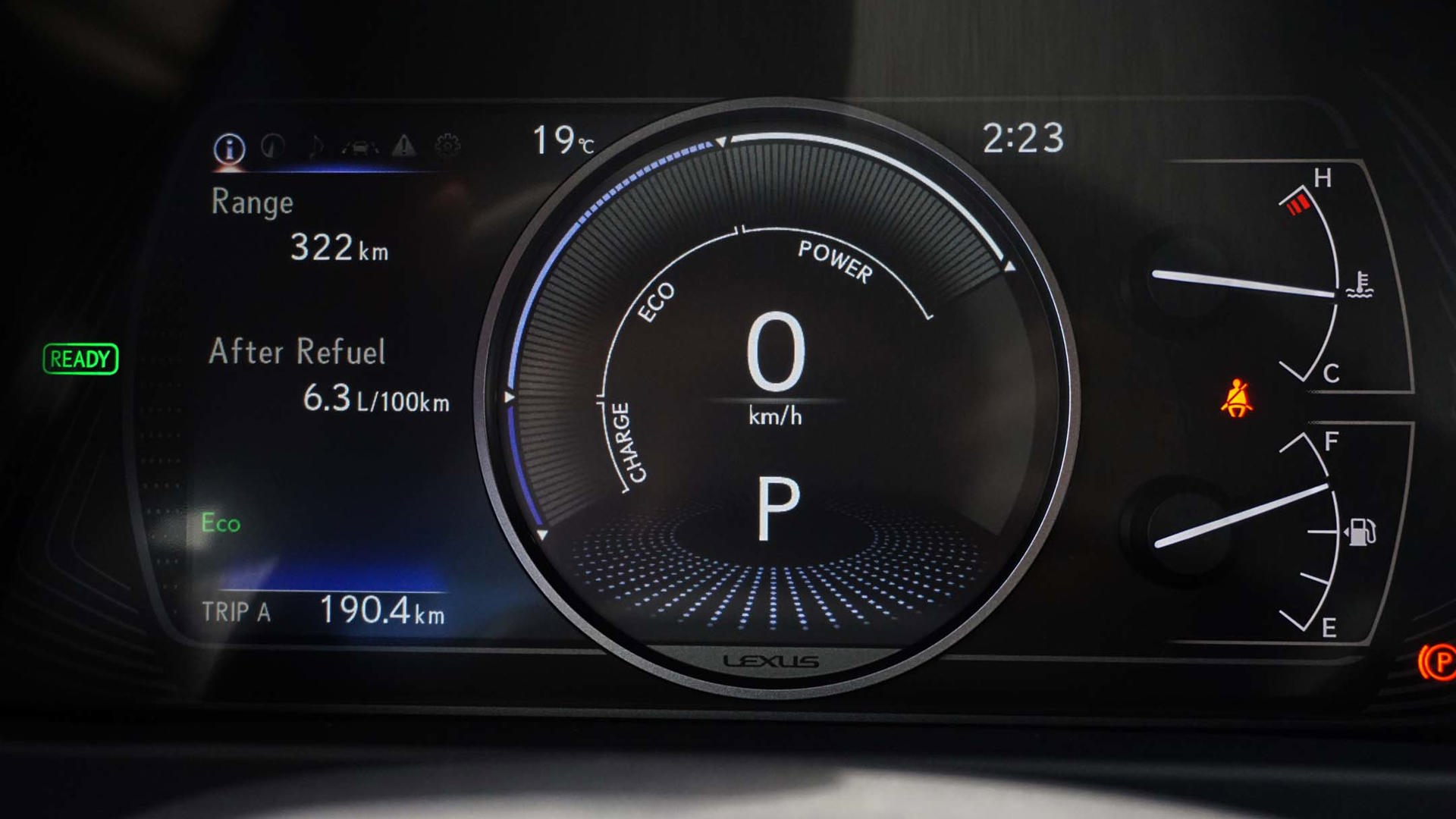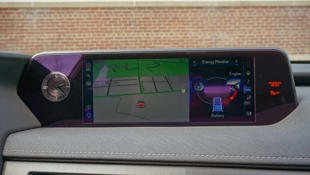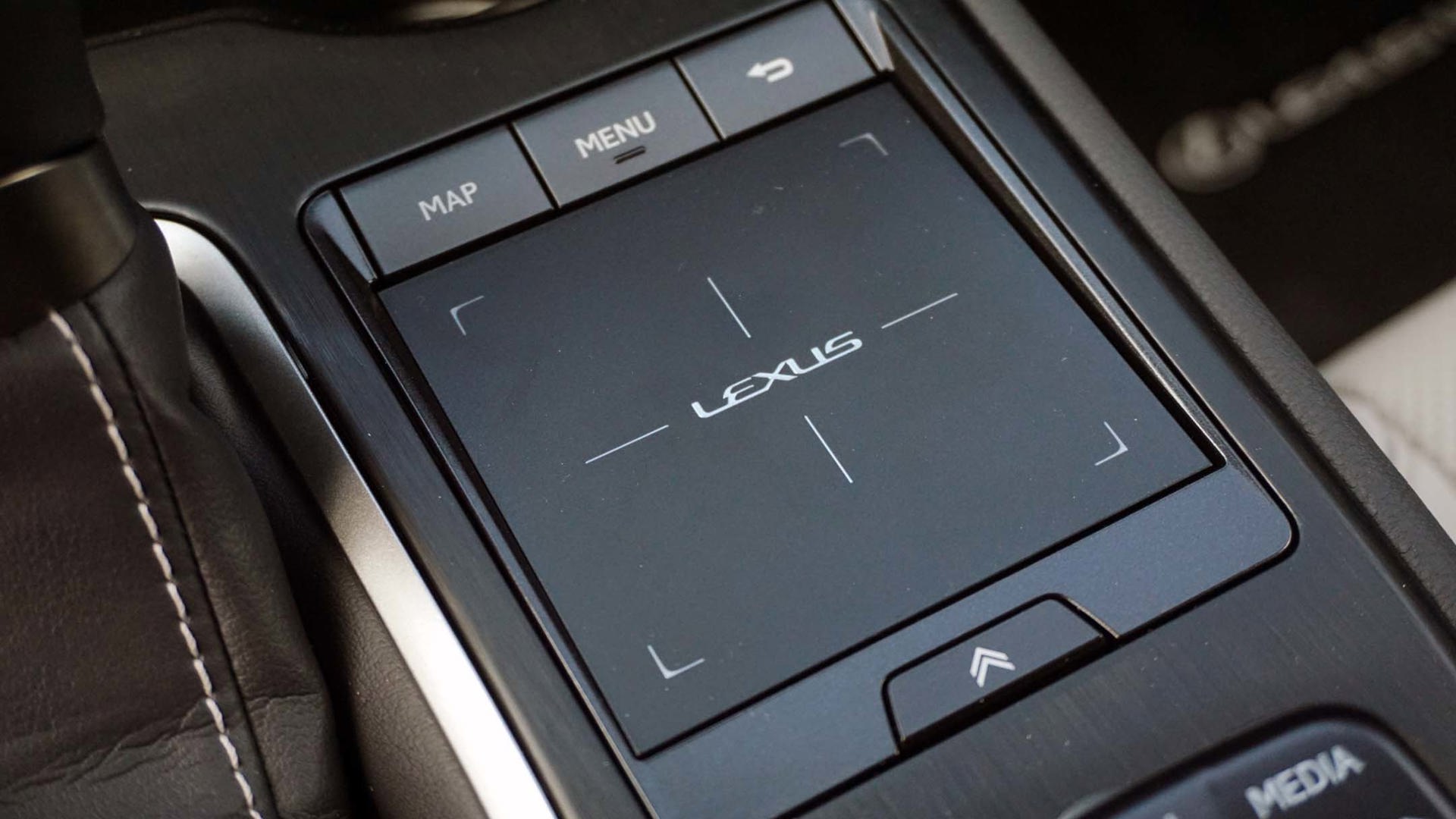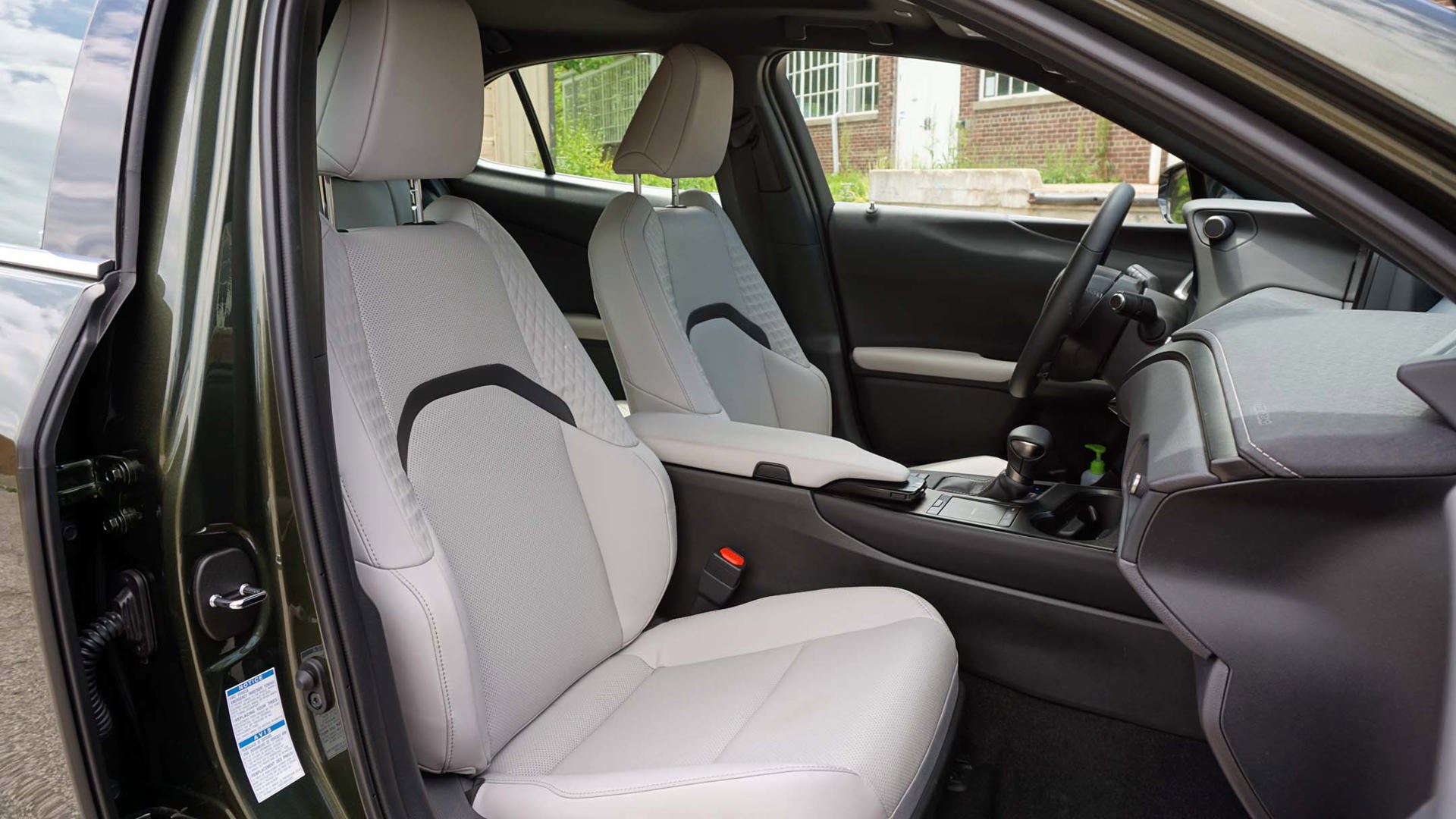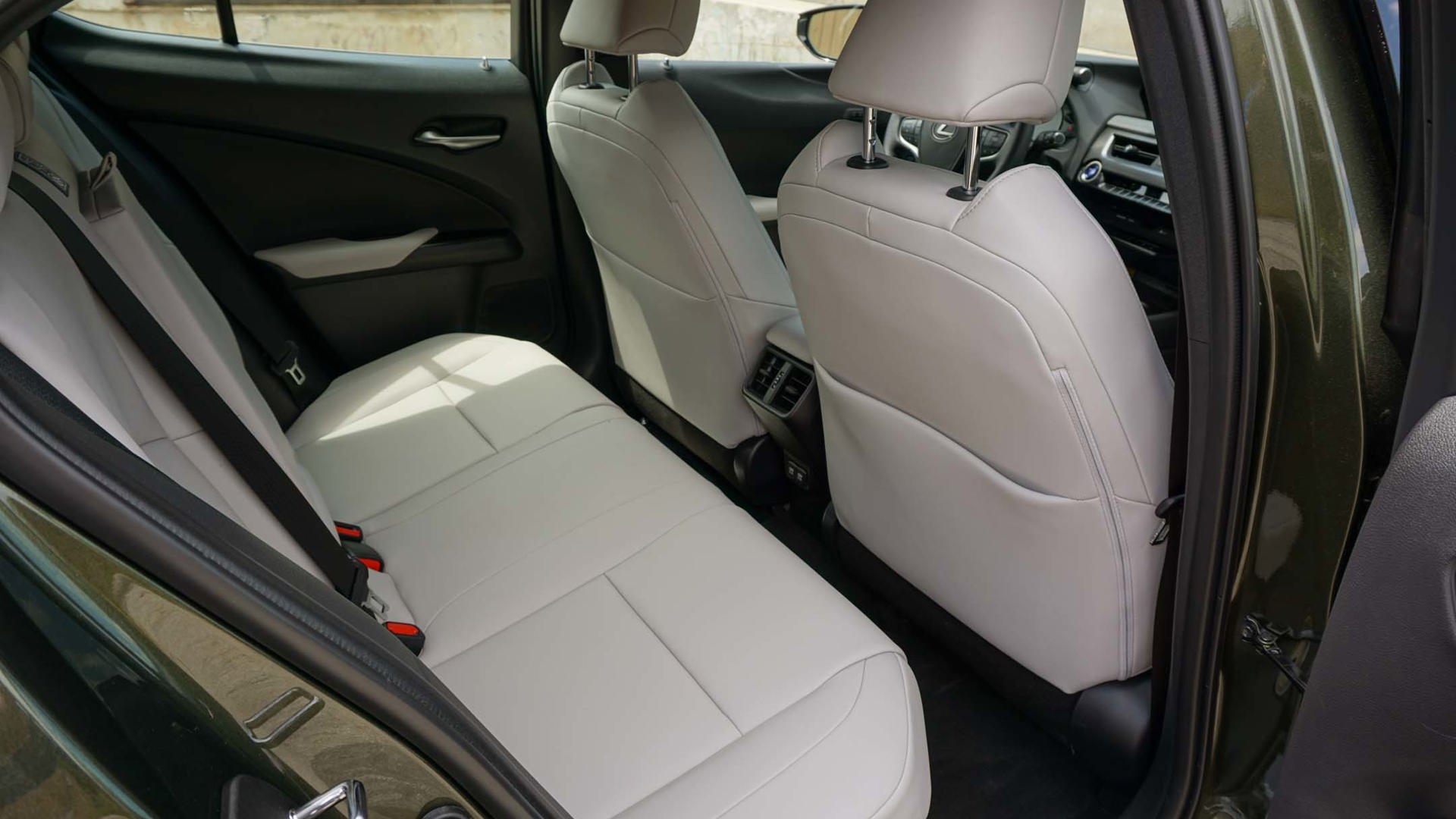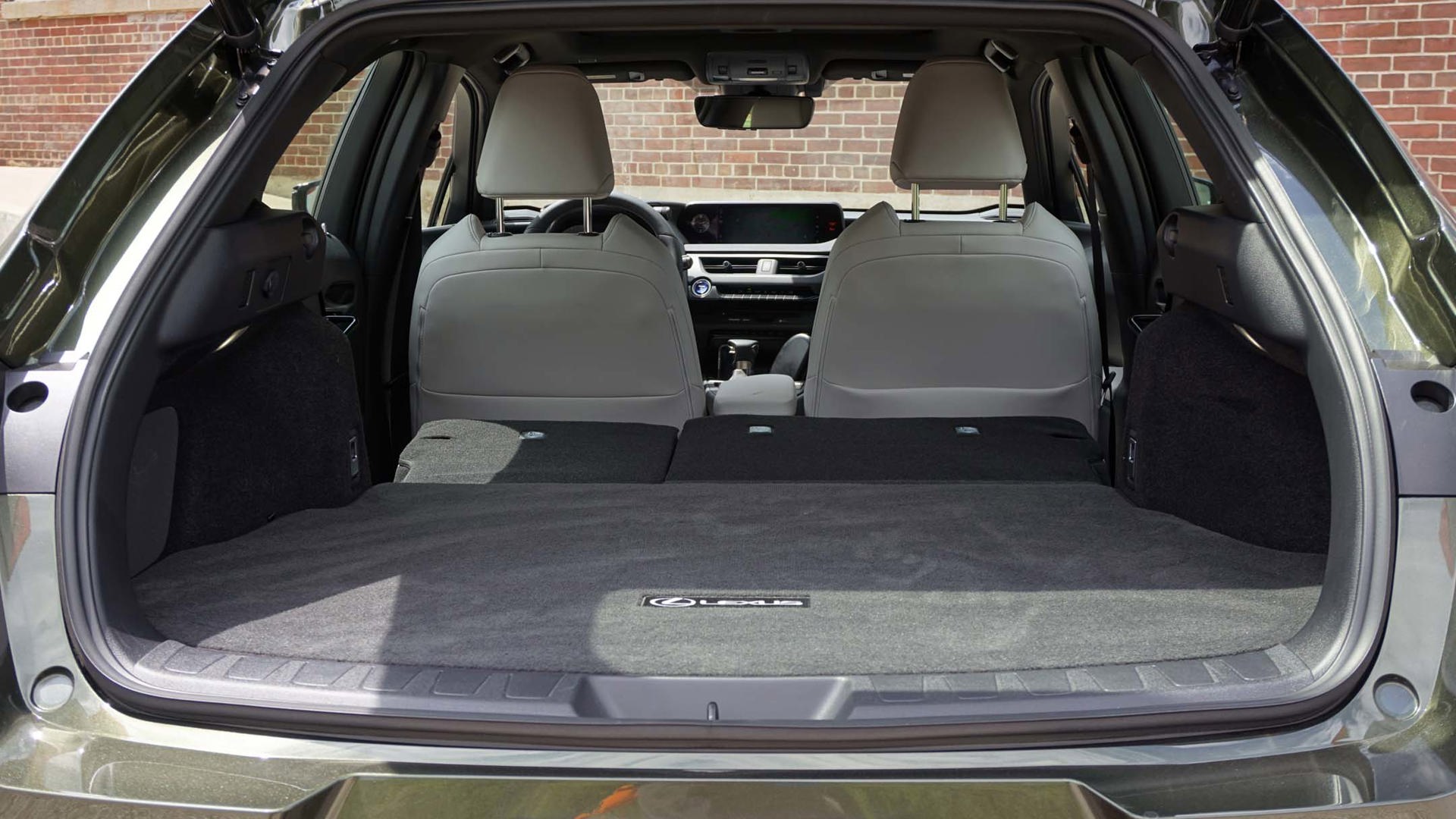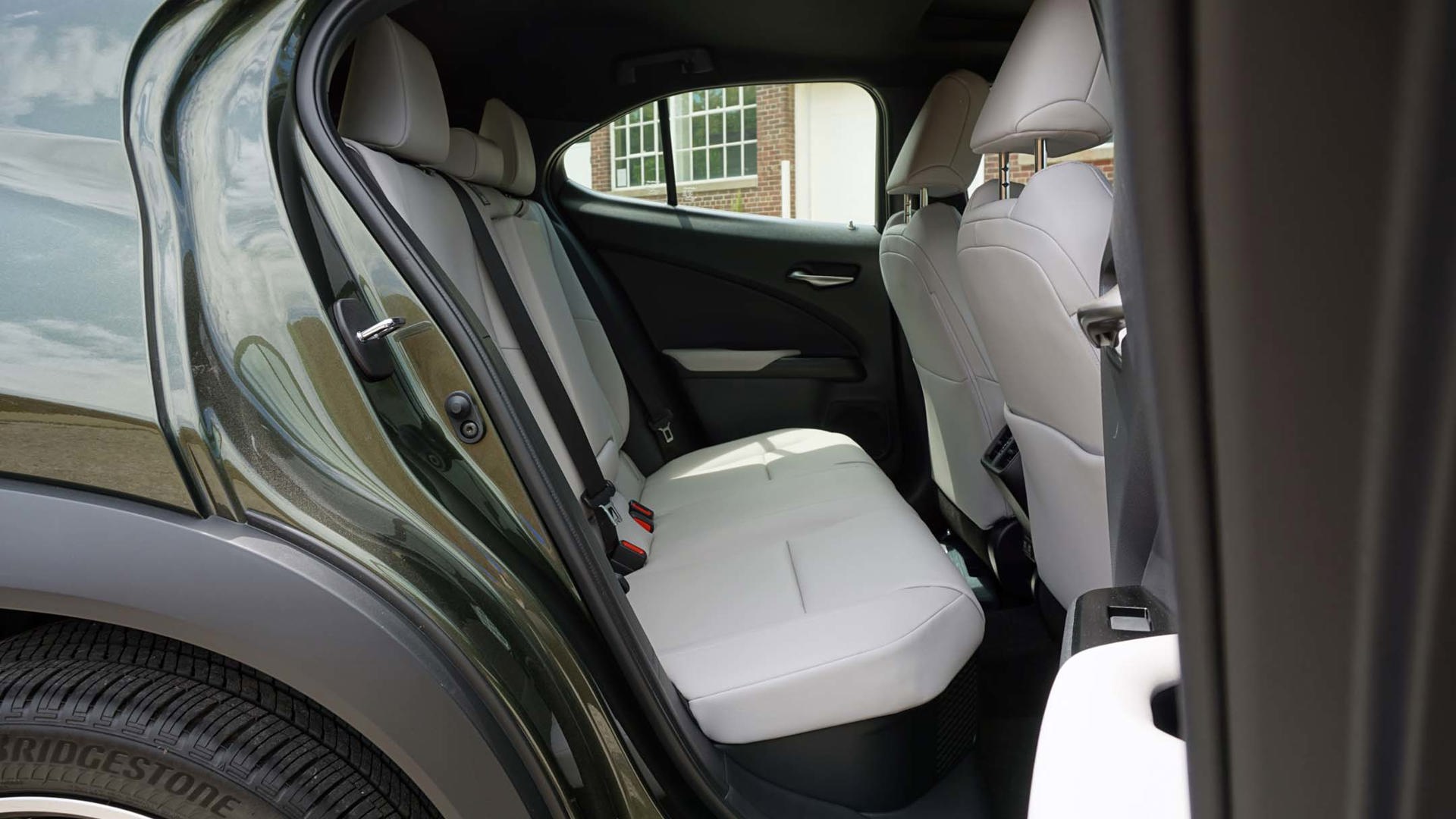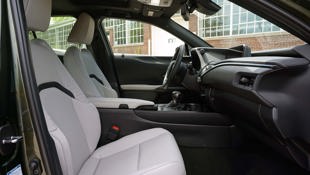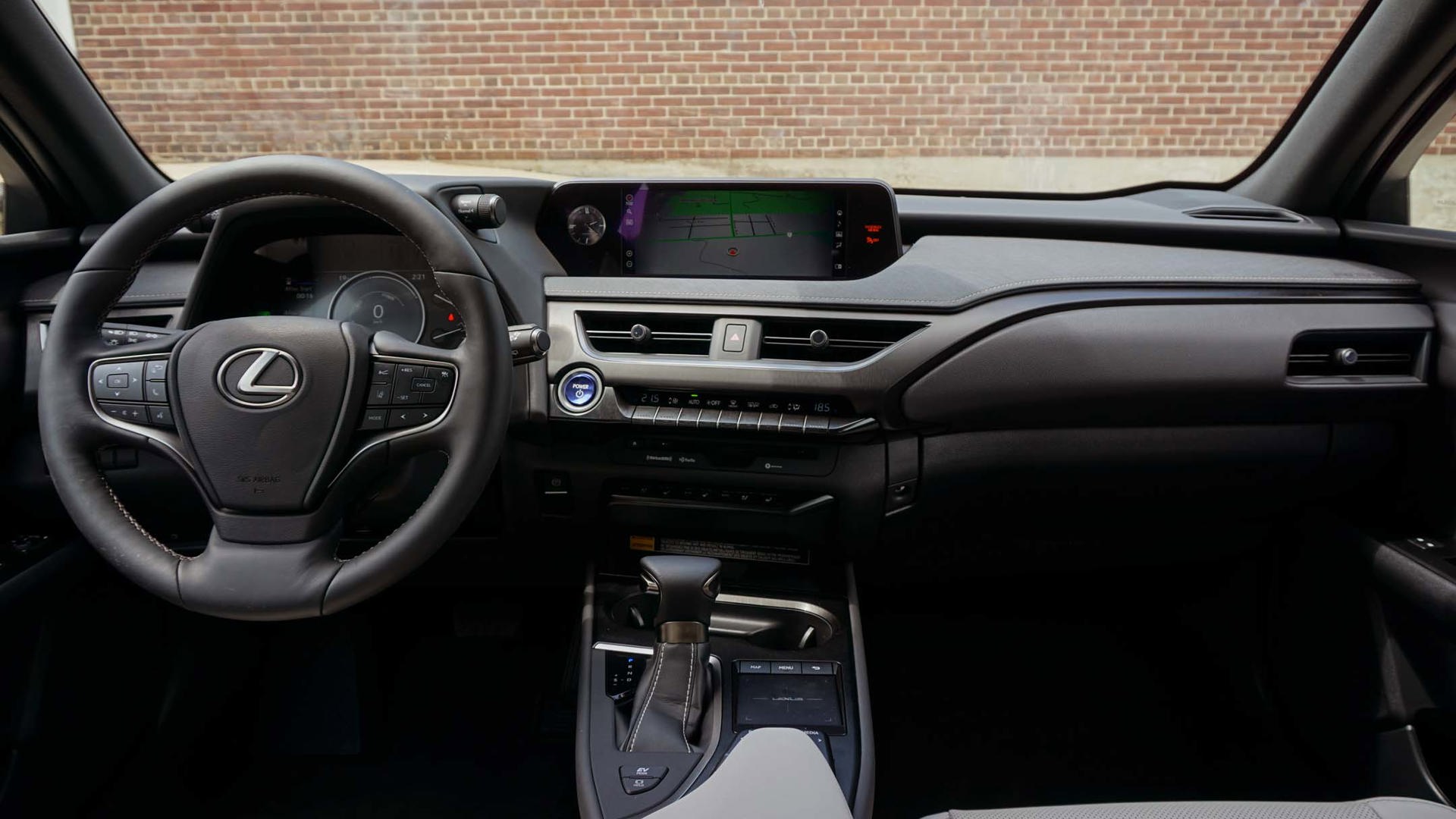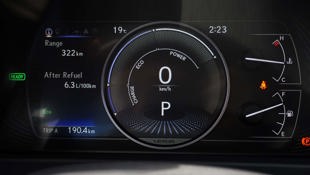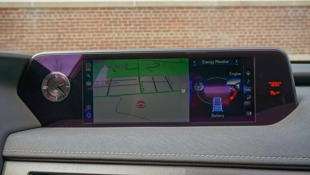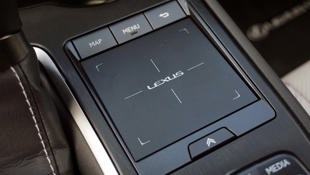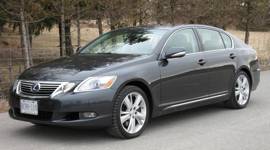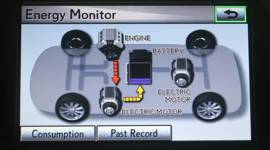 AutoTrader SCORE
AutoTrader SCORE
-
STYLING10/10
-
Safety10/10
-
PRACTICALITY7/10
-
USER-FRIENDLINESS5/10
-
FEATURES10/10
-
POWER9/10
-
COMFORT10/10
-
DRIVING FEEL9/10
-
FUEL ECONOMY10/10
-
VALUE9/10
The last 20 years have seen their fair share of cars and crossovers that were ahead of their time.
Landing somewhere near the top of the list is the Lexus CT, with the hybrid’s wagon-like proportions holding it back from the kind of success it probably deserved. Which is where the 2020 Lexus UX 250h comes in, righting the CT’s wrongs while being hampered by at least a couple of its own.
Power: 9/10
With all due respect to anyone who’s already bought a gas-powered UX, to do so is to completely miss the point of the smallest vehicle in the Lexus lineup. Not only does the gas version deliver less of what matters – output and efficiency – but it also goes without all-wheel drive. That alone should be enough to funnel most shoppers into the gas-electric hybrid version, but for those on the fence, there’s nothing to lose yet so much to gain by adding electrons to the little luxury crossover.
For starters, output grows – not significantly as far as outright numbers, but certainly in terms of noticeable performance gains. The hybrid version uses the same 2.0L gas engine as its conventionally powered counterpart but pairs it with twin electric motor-generators up front, and a rear-mounted unit dedicated to driving the back wheels.
The combination results in net system output of 181 hp – again, not much more than the 168 hp made by the internal combustion version, but that doesn’t tell the whole story. Instead, it’s how quickly the 5.3-kW electric motor in the back joins the party that makes the hybrid version worth the price of admission, chipping in during cornering and acceleration, or when front-wheel traction is at a premium.
With or without sport mode engaged, the gas-electric powertrain will uncork what can at times feel like an endless supply of acceleration without much hesitation. A big reason why is the continuously variable transmission (CVT) that’s mated to the gas engine and dual motor-generators under the hood. With subtle simulated shift points that do little to make it feel like a conventional transmission, the powertrain will happily wind out until the accelerator pedal is released.
The UX hybrid isn’t especially quick, bogged down by all the extra weight that’s along for the ride – it tips the scales at 1,635 kg (3,605 lb), or about 225 kg (495 lb) heavier than the CT it replaces – and the limited powertrain output. But the UX 250h wasn’t built to race from stoplight to stoplight, with an emphasis instead on efficiency.
Fuel Economy: 10/10
With all those electrons working alongside the gas engine, the hybridized UX returns impressive fuel consumption results. According to Natural Resources Canada (NRCan), you can expect to burn a combined 6.0 L/100 km cruising around in the smallest model in the Lexus lineup – impressive even with its diminutive dimensions taken into account. No, it’s not quite as miserly as the Toyota Prius with which it shares most of its electric bits, but the UX is up there with the most economical new vehicles without a plug on the market today.
Real-world results varied only slightly from the federal agency’s estimations, with 550 km of testing – largely on highways and backroads – ending with an average consumption rate of 6.2 L/100 km, equivalent to NRCan’s highway-only projections. Since hybrids tend to do their best work around town, it’s reasonable to expect better results with more city driving.
Driving range is somewhat limited, however, so be prepared for frequent refuelling stops. Since the space in the back is mostly taken up by electrical components, the UX hybrid only has room for a 40 L fuel tank – seven litres less than the gas-powered model. That means a relatively limited range of about 500 to 600 km between fill-ups during normal driving.
Driving Feel: 9/10
Despite its focus on efficiency first – not to mention the lack of outright quickness – the UX 250h is responsive and surprisingly fun to drive. Its taut chassis and ultra-low centre of gravity result in a far more car-like ride than the UX’s crossover-inspired styling might suggest. With its wheels straddling the corners for go-kart-like responsiveness, the UX is exceptionally agile; heck, there might not be another model in the Lexus lineup that’s this much fun to toss around.
With the hybrid system’s nickel-metal hydride (NiMH) battery and associated cooling equipment that’s located beneath the back seat and the rear-mounted electric motor, the distribution of mass front and rear creates tremendous balance. Add in its squat stance, and the UX 250h is playful and fun in ways that are rare even by non-hybrid standards. There’s certainly more agility than the adhesion limits of the hockey-puck-hard tires will allow you to explore, the rubber screeching and squealing as the crossover carves impossibly tight lines through even the sharpest turns.
On corner exit, the surge of electrified acceleration at the rear wheels helps it power out with almost no understeer or body roll to speak of. While the steering isn’t especially communicative, it offers excellent weight and resistance – and it can be dialled up a degree or two via the sport mode selector located next to the gauge cluster. (Opting for either available F Sport package adds paddle shifters for even more driver engagement.)
Comfort: 10/10
If surprising sporting prowess isn’t your thing, you’re in for a treat, because the UX hybrid also happens to be supremely comfortable. The same way it leverages the weight of its gas-electric powertrain to improve driving dynamics, the extra heft also enhances the suppleness of the suspension.
Here’s where that low centre of gravity comes in again, almost pulling the vehicle towards the pavement to keep the little crossover planted and ready to soak up whatever is thrown its way. Coupled with great suspension damping, the UX 250h has a kind of composure that’s rare in a $40,000 vehicle. Only the most severe road imperfections disrupt its poise, and even then it’s never enough to totally unsettle the UX.
It’s a quiet ride, too, with plenty of sound-deadening to keep outside noises at bay. Then there’s the whisper-quiet starting and stopping of the gas engine, with even moderate audio levels from the stereo easily drowning the 2.0L out. While the seats are covered in a synthetic leather upholstery, the ones in the front do a convincing job of feeling like the real stuff. They’re also well-contoured and supportive – and they come heated and ventilated.
Features: 10/10
Taking into account the UX hybrid’s starting price – again, $40,000 flat – there’s plenty packed into the little Lexus. The lack of genuine leather and built-in navigation aside, it’s decked out the way a premium product should be. Those heated and ventilated front seats, a heated steering wheel, dual-zone automatic climate control, a power sunroof, and 18-inch alloy wheels come equipped on all hybrid models. There’s also a well-rounded suite of advanced safety features, with blind-spot monitoring, lane-keep assist, adaptive cruise control, and automatic emergency braking.
Lexus Canada kept it simple in terms of packaging, too: there’s only one trim available, with a trio of add-on packages offered. There’s a basic F Sport package that, for $2,100, will spice up the styling inside and out. Then there’s the $5,300 Luxury pack – the same one fitted to the tester shown – that adds a head-up display, foot-activated power tailgate, built-in navigation, a wireless phone charger, and a bigger infotainment screen, among others. An $8,900 F Sport package, meanwhile, combines all of the above and then some.
User Friendliness: 5/10
It’s that infotainment screen that’s home to the biggest problem with the UX, and it’s one that makes it all but unbuyable in your humble author’s eyes. Whether the standard seven-inch screen or the larger 10.3-inch unit, the UX does without a touchscreen, relying instead on a console-mounted trackpad that’s among the most frustrating to ever be fitted to an automobile.
It’s supposed to work like the cursor touchpad on a laptop, only it’s twitchier and harder to control – especially when driving. Add in swipe and pinch functions that are supposed to mimic the way a smartphone works and it shouldn’t be hard to imagine how frustrating it is to do it all via a sensor the size of a Post-it Note on the centre console. Swiping around the radio or navigation screens takes patience, while the inclusion of Apple CarPlay (Android Auto is also standard) feels like an afterthought, and none of the touchpad’s gimmicks work with the device-mirroring system. There’s no pinching to zoom on Google Maps or inputting search terms by drawing letters. There isn’t even a cursor to hover over the various menus and features, requiring painstaking swipes to get to where it is you want to go.
Other cabin controls are more approachable, but only slightly so, and it depends on what function you’re looking for. While the HVAC system is about as simple as can be, with a row of buttons and rocker switches on the dash, operating the tailgate from inside the cabin requires a bit of sleuthing before locating the tiny button (it’s low on the dash by the driver’s left knee and is barely visible from an upright seating position).
Practicality: 7/10
It’s a shame the cabin’s controls are so frustrating to use, because the passenger compartment itself is well sorted and surprisingly roomy. The priority here is clearly placed on occupants up front, with lots of space to get comfortable and excellent outward visibility from the left seat. But there’s ample room in the rear seats to shuttle a couple of extra passengers in a pinch. While climbing inside through either rear door takes a bit of contorting, there’s enough room to settle in for at least a shorter drive.
It’s behind the back seats that the UX suffers for its stature, with a tiny cargo compartment that’s only made smaller by the rear-mounted electrical components. Cargo room is listed at 484 L, a number that seems generous to the naked eye. Compare that to, say, the similarly sized gas-powered Hyundai Kona, with its 544 L feeling far larger. Either way, it’s a cramped space that’s compromised by a high load floor (again, it’s accommodating a lot of extra stuff underneath) that requires some extra oomph when it’s time to toss heavier items in the trunk.
Then there’s the whole question of whether it’s really a crossover – not that the answer should sway potential buyers. It’s an existential crisis that no doubt led to the demise of the Infiniti QX30, which was similarly positioned in the market as a crossover that was more car-like than anything else. Besides looking a little bit more rugged thanks to the chunky wheel arch mouldings, the UX 250h rides, handles, and carries cargo like a car, not a crossover. Even ground clearance, at 160 mm (6.3 in), isn’t especially tall and doesn’t allow the UX to go very far off the beaten path.
Styling: 10/10
The Lexus design language is as polarizing as any brand’s, but it certainly suits the scaled down dimensions of the UX. The various creases and bodylines make it look as though the UX was carved from a single chunk of metal, while the massive spindle grille and arrow-shaped headlights make the front end just aggressive enough to give it character without straying too far beyond the little hybrid’s raison d’être. The pearl green paint seen here is just icing on the cake, the hybrid-exclusive hue the source of more than its share of compliments.
There’s a lot going on inside, with tons of textures and shapes fighting for attention, but it’s far from unpleasant. The lack of a touchscreen left designers with flexibility inside and it shows, with the infotainment display pushed well forward and clearing the way for flowing design lines and a unique textured material on the dash that’s meant to mimic traditional Japanese washi paper. The front seats, too, feature sashiko-embroidery-inspired quilting in a nod to the automaker’s heritage.
Safety: 10/10
In addition to the slew of advanced safety features included in the UX, there’s a whopping 10 airbags tucked inside the cabin. There’s also stuff like standard rain-sensing windshield wipers and available steering-responsive headlights that enhance the view outside when driving in the dark or when weather conditions worsen. While rearward visibility could be better, there are more than enough sensors built in to warn of unseen items around back.
The Insurance Institute for Highway Safety (IIHS) awarded the UX with its Top Safety Pick+, with particularly high marks in various crash testing. The independent organization did, however, note poor performance from the standard headlights that lack steering response, with excessive glare from the low-beam setting.
Value: 9/10
With a base price of $40,000 before freight and fees, the hybrid UX renders its gas-powered counterpart obsolete. The $2,550 price premium is worth the upgrade for the all-wheel drive alone, and then there’s the improved fuel efficiency that comes with it.
Either way, $40,000 is a lot of money for such a tiny vehicle, but it’s competitively priced compared to similarly sized entries from Mercedes-Benz, BMW, and Audi – none of which include hybrid power in their smallest offerings. Add in all the features included for the money, and the UX 250h is a downright bargain. Even with the Luxury pack added to the tester shown, a pre-tax price of $47,475 isn’t outrageous.
The Verdict
My tester was about $10,000 more than a loaded version of the all-wheel-drive Toyota Prius, but you can tell the difference in just about every way imaginable. The way it’s put together has serious luxury brand vibes, and it certainly doesn’t feel like anything other than a proper premium model. There’s a lot to like about the Lexus UX 250h, and it goes beyond its miserly ways. But that dreadful touchpad is a deal-breaker, taking an otherwise outstanding little crossover and making it a miserable one to live with.
| Engine Displacement | 2.0L |
|---|---|
| Engine Cylinders | I4 Hybrid |
| Peak Horsepower | 181 hp (net) |
| Peak Torque | n/a |
| Fuel Economy | 5.7/6.2/6.0 L/100 km cty/hwy/cmb |
| Cargo Space | 484 L |
| Model Tested | 2020 Lexus UX 250h |
| Base Price | $40,000 |
| A/C Tax | $100 |
| Destination Fee | $2,075 |
| Price as Tested | $47,475 |
|
Optional Equipment
$5,300 – Luxury Package, $5,300
|
|

